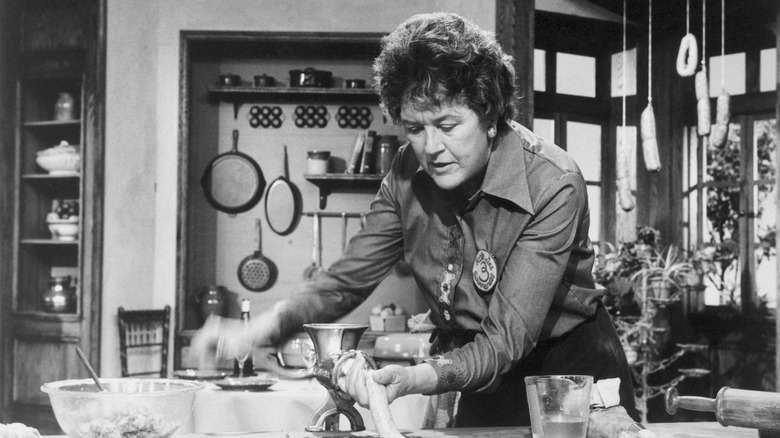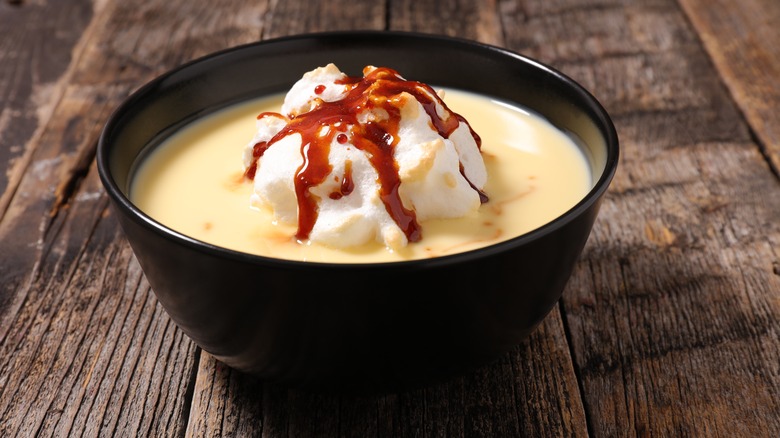The Old-School French Dessert Beloved By Julia Child
Julia Child, an incredible chef, was known for introducing American TV audiences to French cuisine. This is why, when she brought île flottante — which translates to "floating island" dessert — to U.S. fans, it became insanely popular. This special treat features baked "islands" of meringue in a "sea" of crème anglaise. Its recipe requires a lot of whisking skills and playing around with temperature, utilizing heat and cooling to get the dish just right. The textural contrast of this concoction — the cool custard with the baked meringue and crispy spun sugar on top — is why the floating island was one of Child's favorites.
The first known written version of a specific floating island recipe appeared in the 1747 book "The Art of Cookery Made Plain and Easy" by English author Hannah Glasse, though you'd be forgiven for confusing a floating island recipe with its close relative: œufs à la neige, or "eggs in the snow." However, the main distinction between these two desserts is that floating island's meringue can be baked, while œufs à la neige meringues are always poached.
Like Julia Child's favorite Queen of Sheba chocolate cake, the floating island dessert uses only a handful of fairly common ingredients. The complexity, however, lies in its classic preparation techniques. This recipe requires you to bake your meringue and then very carefully make the custard from scratch.
Nailing a floating island recipe takes finesse
The custard — or crème anglaise — portion of the recipe requires you to combine egg yolks, eggs, sugar, and cornstarch over low heat until it thickens and can coat the back of a spoon (just over 10 minutes). Whisking slowly while the mixture is on the heat is the key to incorporating these ingredients. If the heat is too high or the mixture is not whisked properly, you risk ending up with scrambled eggs.
The meringue is another critical component of this dish, so make sure to use room temperature eggs to get your meringue extra fluffy. It's important to keep in mind that the meringue needs to be baked, cooked, or even poached so it gets that "floating" effect. Some recipes suggest poaching the meringue in milk, then using the leftover milk to make the base for the crème anglaise to maximize creaminess and minimize waste.
If you want to experiment, you can incorporate fruit like apricots, strawberries, or citrus into the custard. One option is to add fresh fruit into the custard mixture while it's on the stove, just as it has begun to thicken. For a citrus-flavored custard, you can simply use the zest and incorporate it as the mixture is cooling. You can also try substituting fresh fruit with dried fruit in this recipe, but be sure that it is properly cooked through and fully incorporated. If all else fails, tempering some fruit liqueur into the custard can take it to the next level.


